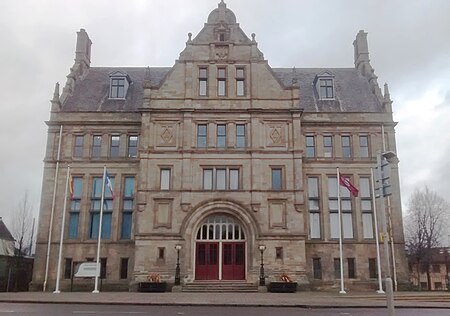Alloa Town Hall
1889 establishments in ScotlandAlfred Waterhouse buildingsAlloaCategory C listed buildings in ClackmannanshireCity chambers and town halls in Scotland ... and 3 more
Government buildings completed in 1889Listed government buildings in ScotlandUse British English from April 2022

Alloa Town Hall is a municipal building in Marshill, Alloa, Scotland. The structure, which was the meeting place of Alloa Burgh Council, is a Category C listed building.
Excerpt from the Wikipedia article Alloa Town Hall (License: CC BY-SA 3.0, Authors, Images).Alloa Town Hall
Marshill,
Geographical coordinates (GPS) Address Nearby Places Show on map
Geographical coordinates (GPS)
| Latitude | Longitude |
|---|---|
| N 56.1165 ° | E -3.7953 ° |
Address
Alloa Town Hall
Marshill
FK10 1DU
Scotland, United Kingdom
Open on Google Maps






